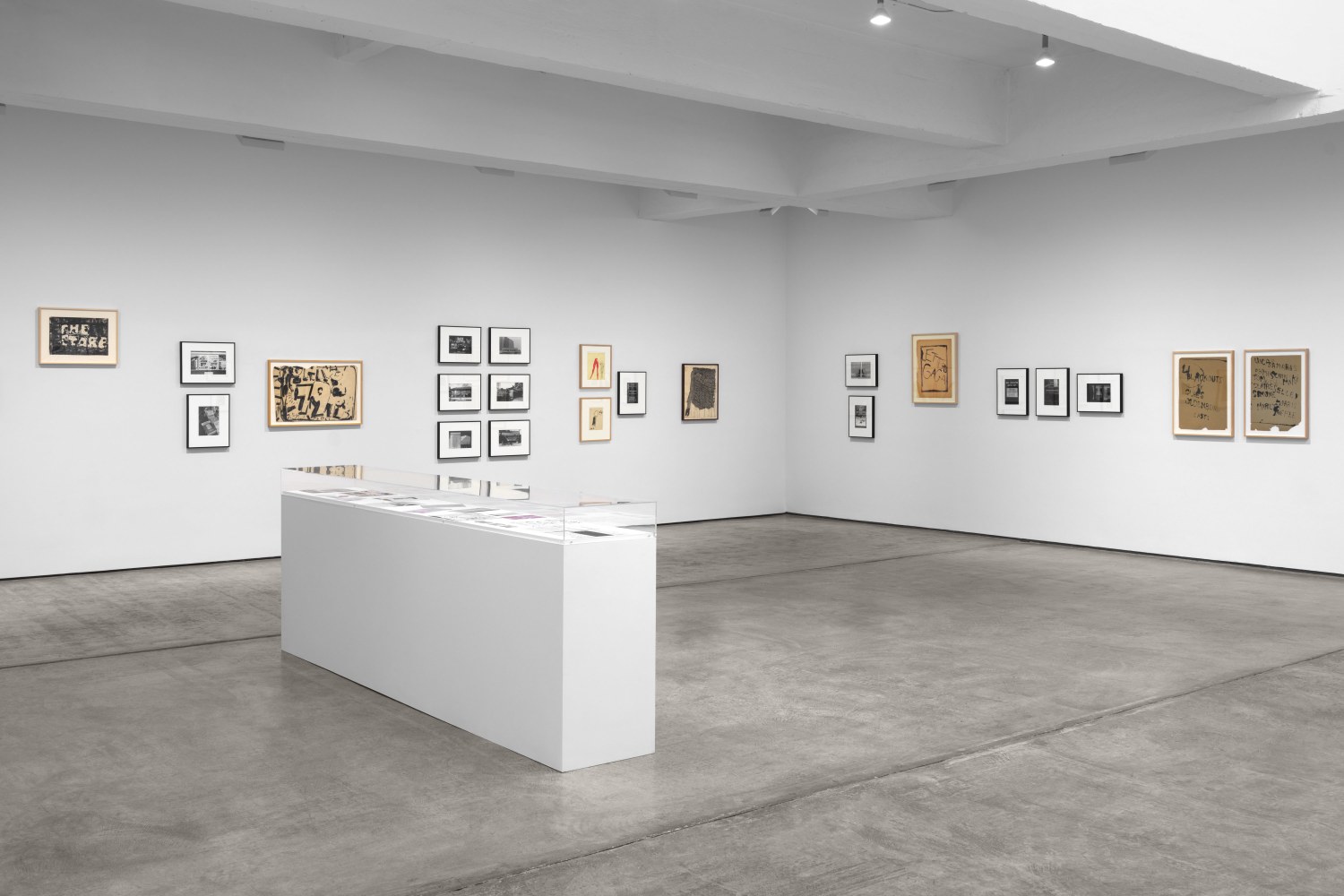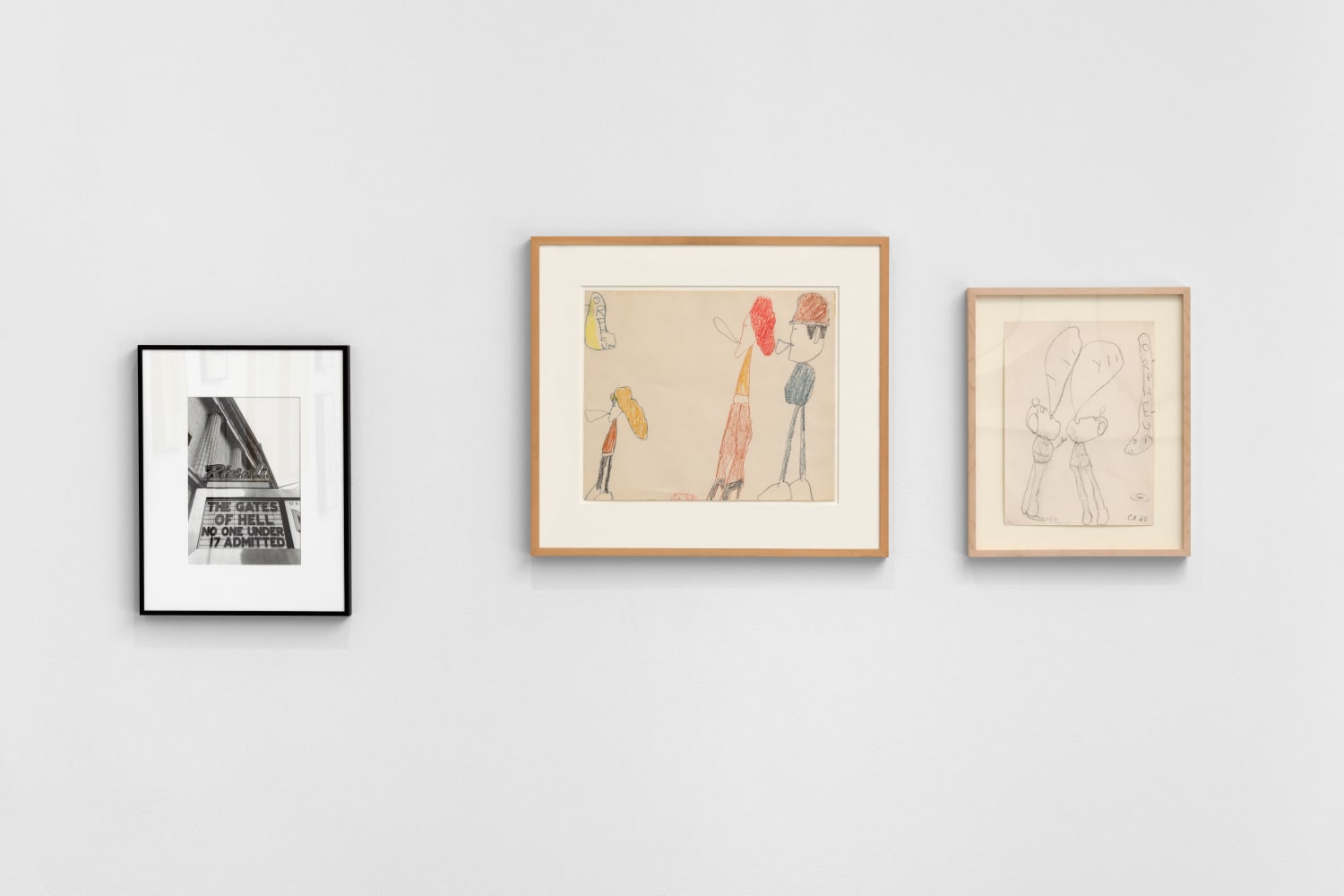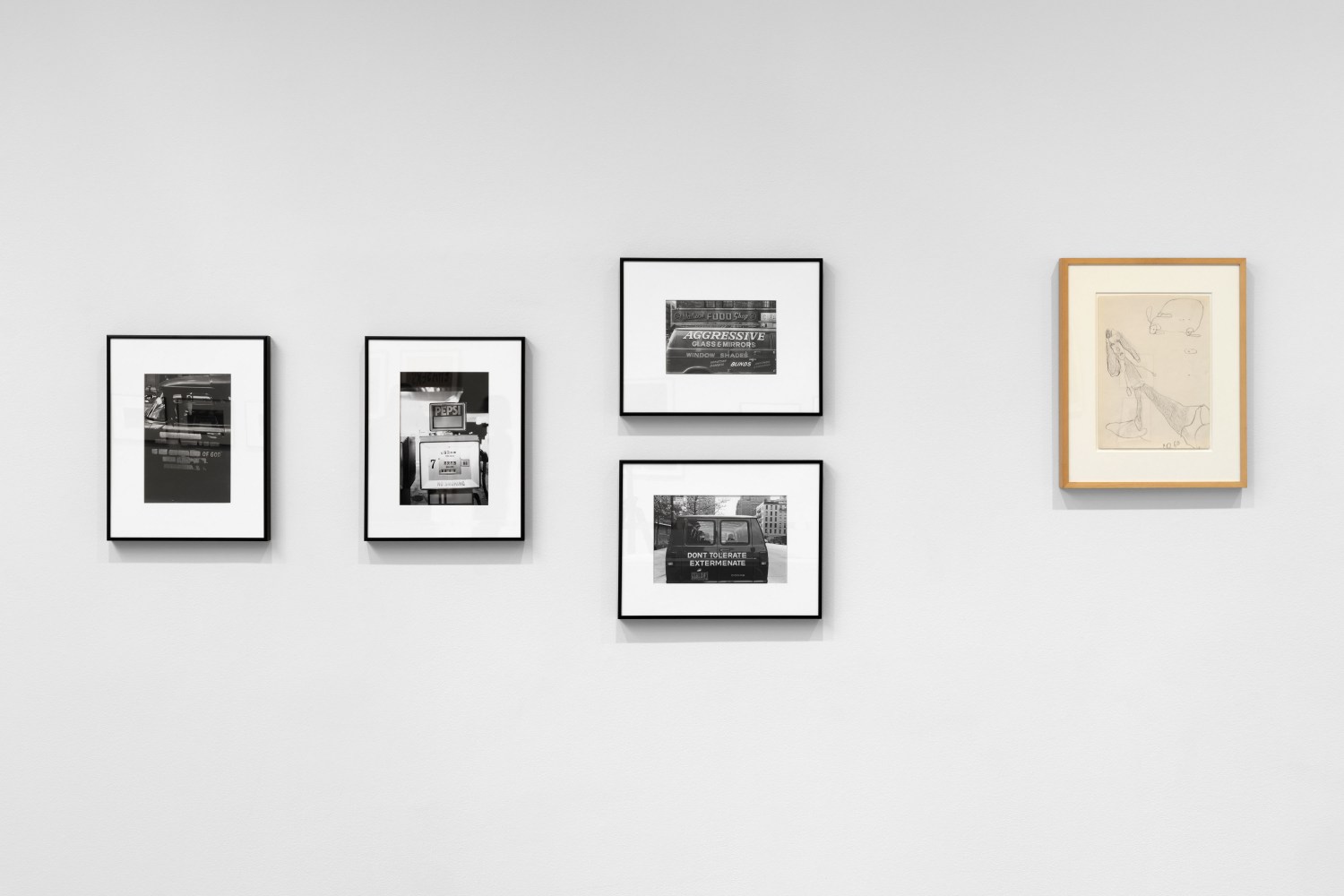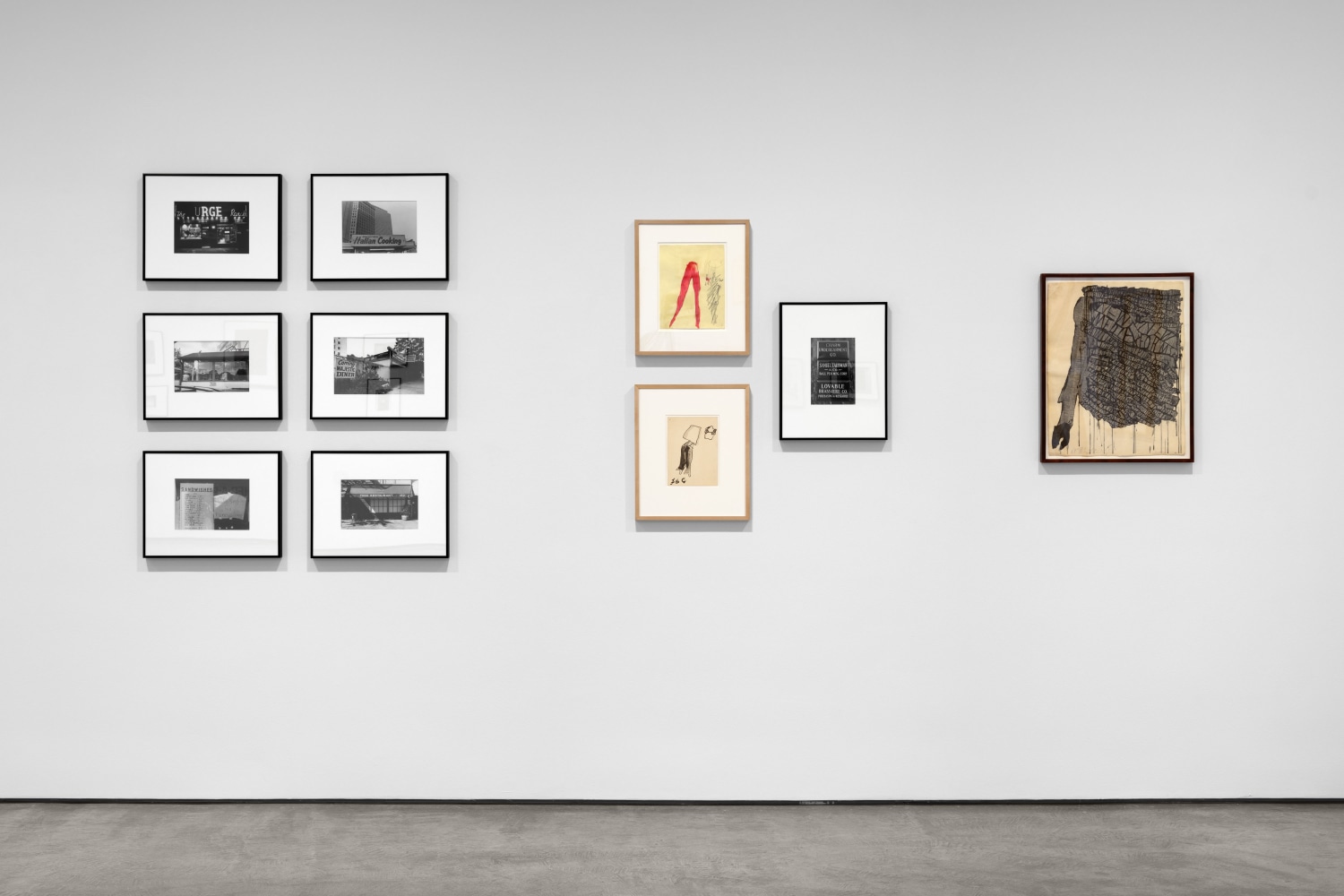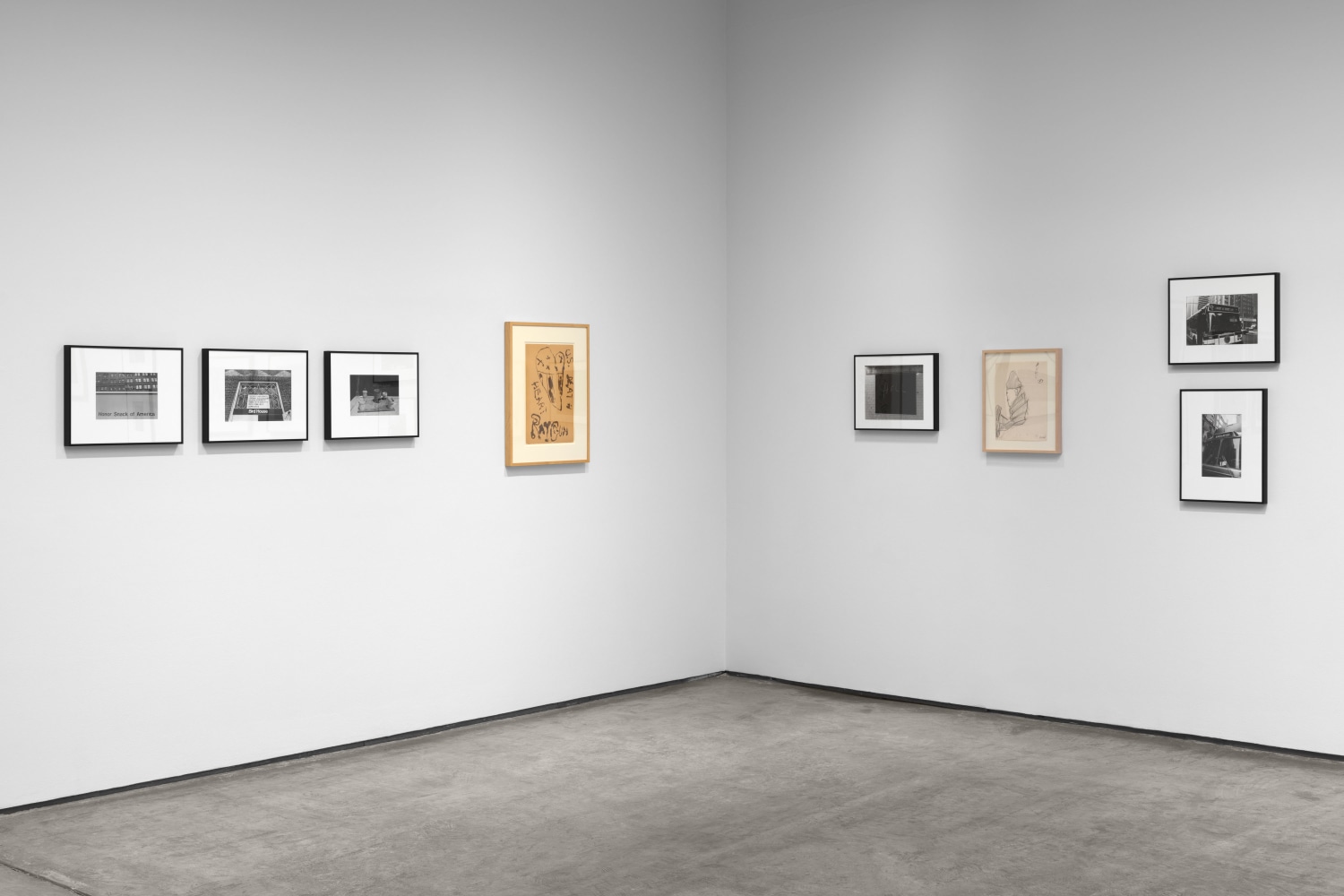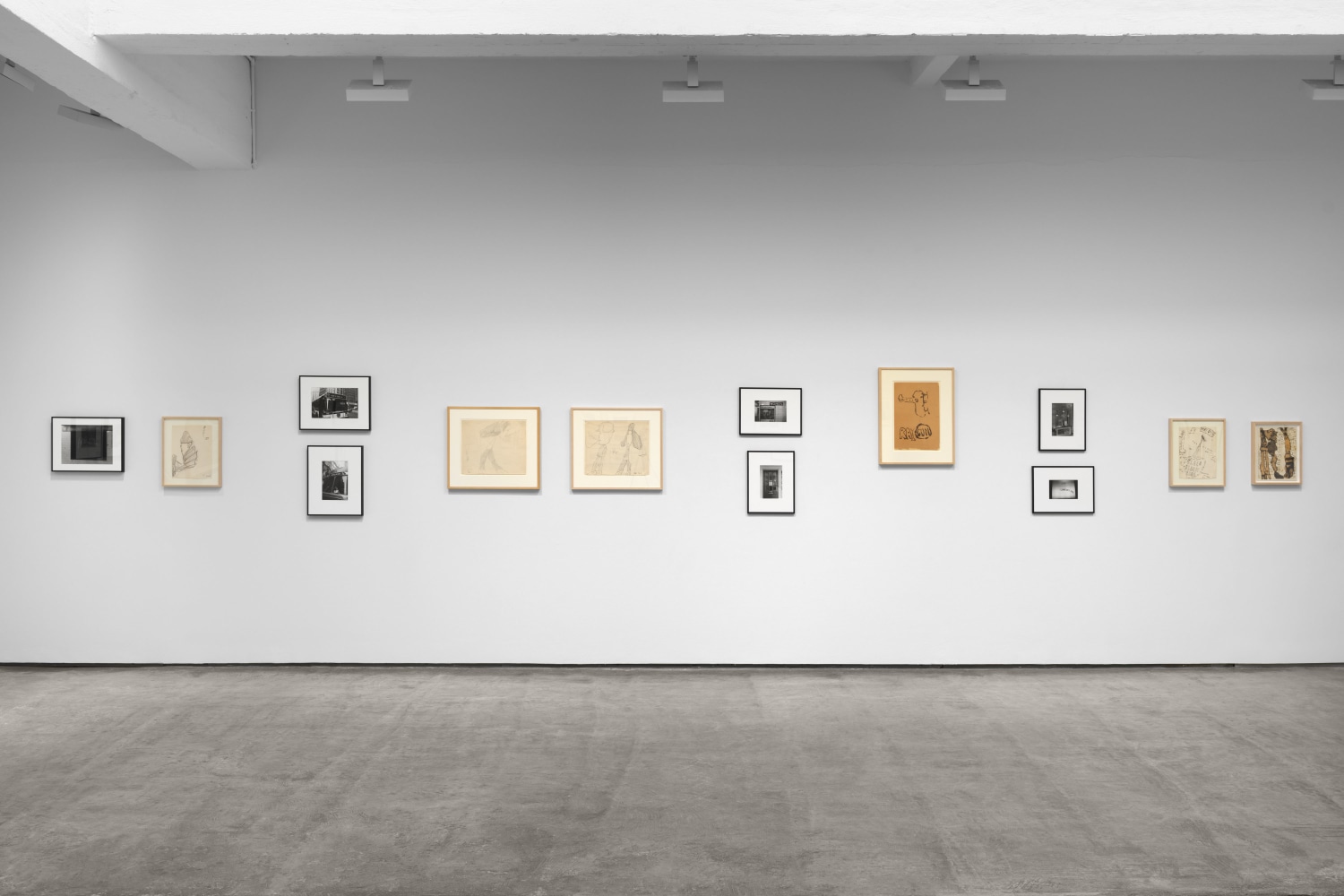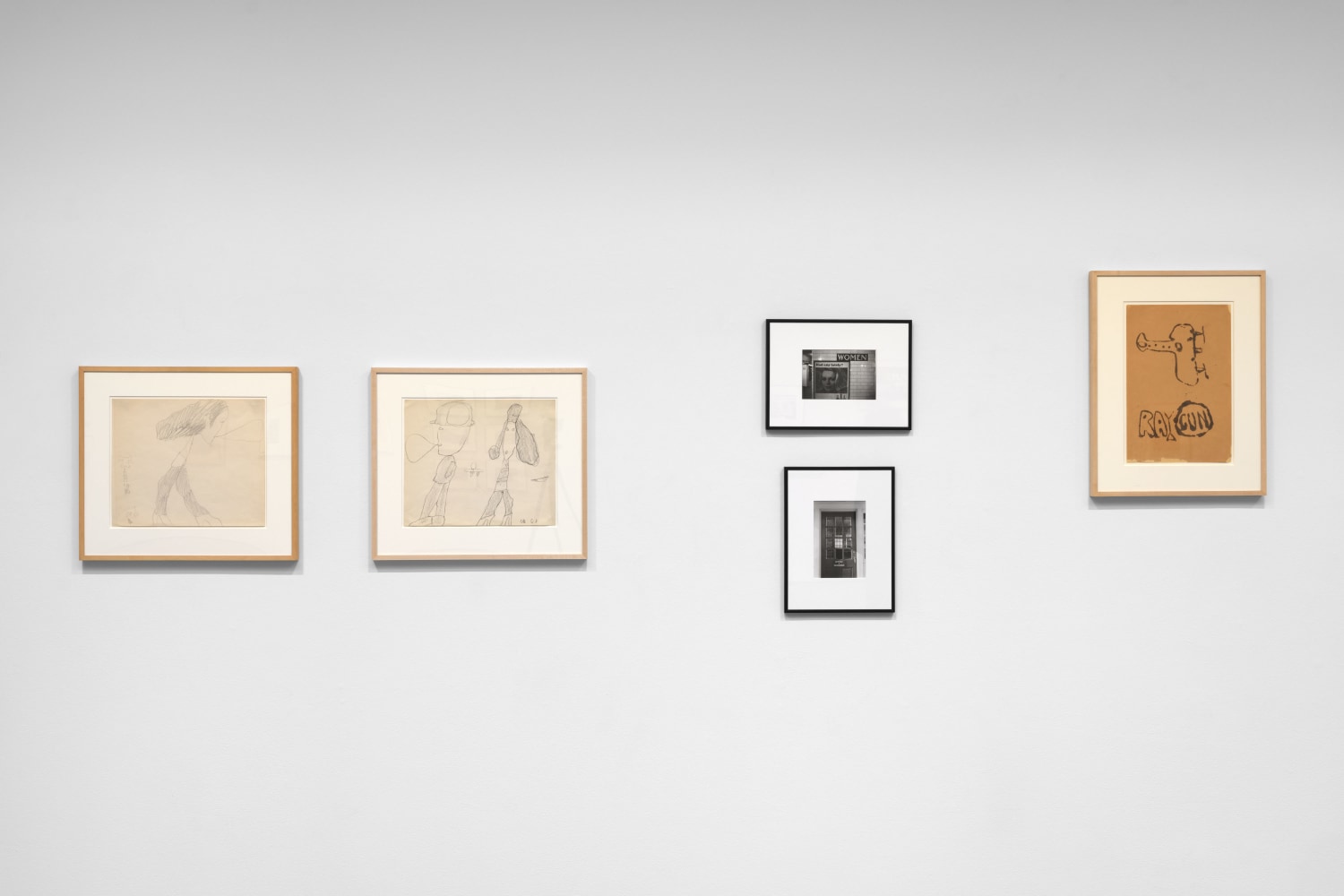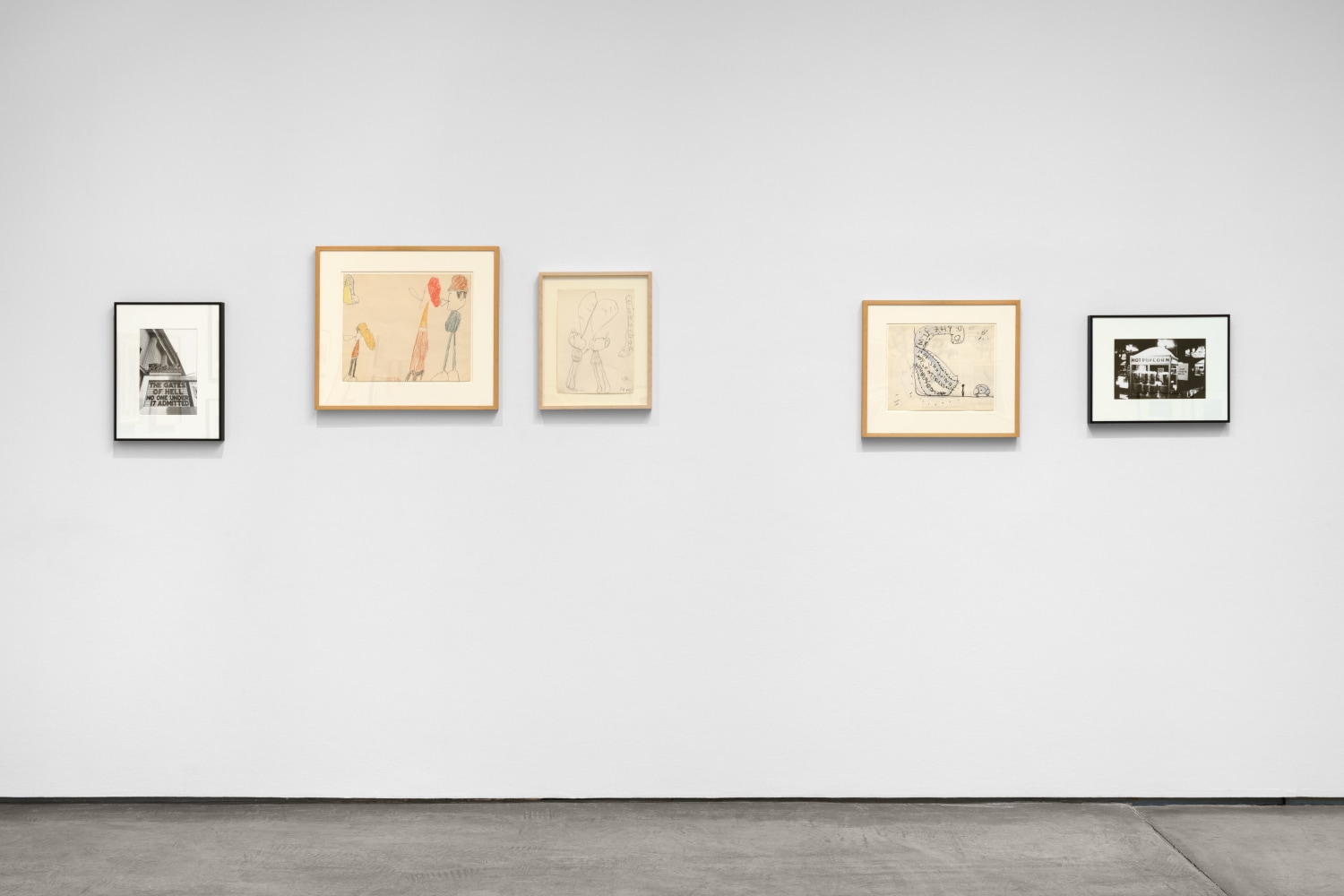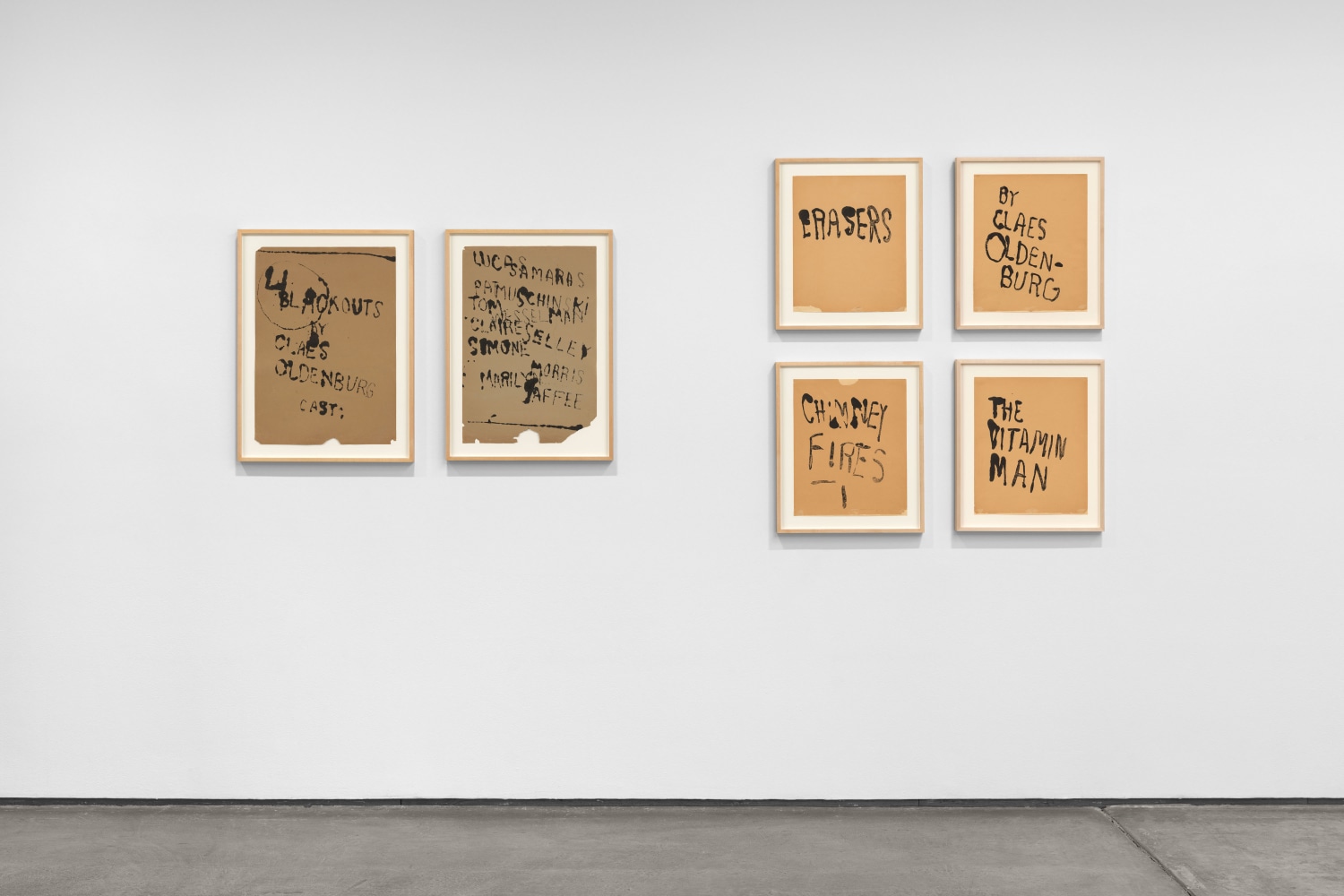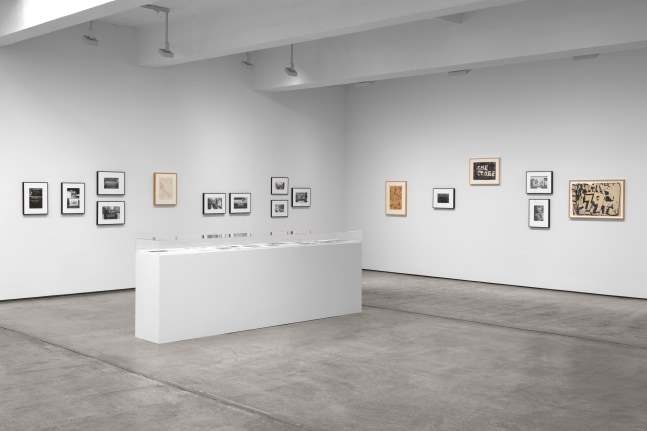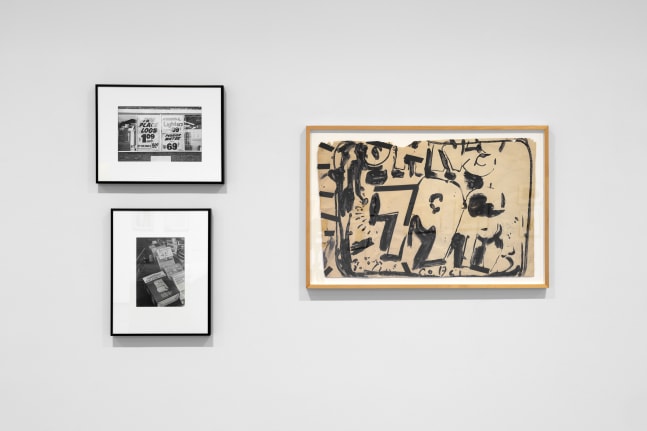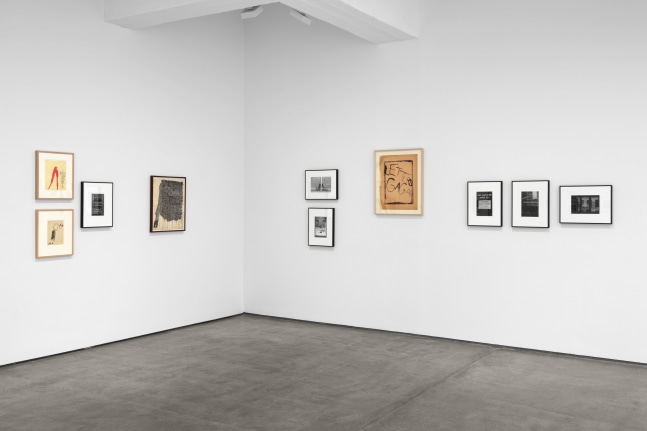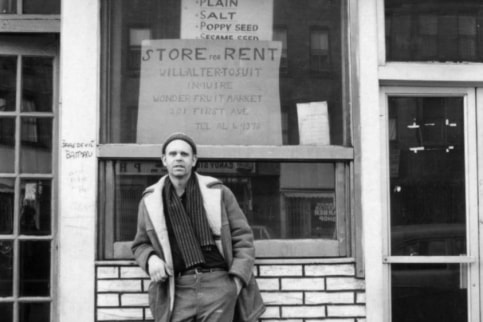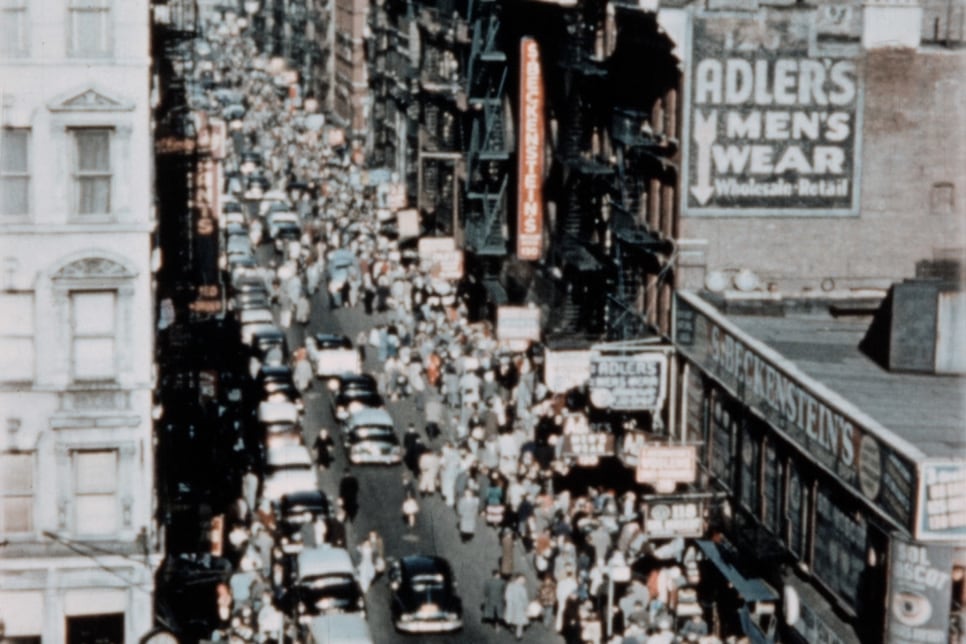Claes Oldenburg and Peter Moore both moved to New York in the mid–1950s and were immediately struck by the city’s streets, in particular the sidewalks, storefronts and signage that clamored for attention. Keenly alert to the visual assault of language and communication, Oldenburg made drawings and sculptures of storefronts, street objects and text-based posters, while Moore produced a historical record of city signage through documentary photographs. The exhibition will display key examples from these bodies of work, including pieces from Oldenburg’s legendary installations The Street (1960) and The Store (1961) that interpret the urban environment depicted in Moore’s images. Similarly attentive to witty juxtapositions of words and phrases as well as the cycle of urban transformation and capitalist expansion, Oldenburg and Moore confronted the overall theatricality of the city’s streets with equal parts mischief and grit.
Oldenburg described his obsession with the street and its stores in 1961: “The goods in the stores, the billboards, the signs, wrappers, etc., all these things attract me very much, and I find myself wanting to imitate them.”[1] His emulation had begun with The Street (1960), an installation and exhibition in two parts at the Judson Gallery and the Reuben Gallery. The layering of posters and bills, which the artist described as the “[superimposed] residue of hopeless dreams” was particularly appealing, and Oldenburg produced a series of monotypes in ink on newsprint paper to promote performances that took place inside The Street. [2] Some were wheat-pasted around the neighborhood in an effort to “harmonize” his exhibition with the urban reality, and several of the surviving examples will be installed in the exhibition.[3]
Oldenburg’s Store was modelled on local mom-and-pop stores that manufactured and sold their products in-house, and it is those bygone businesses that appear in Moore’s photographs, their displays squarely positioned within the frame to provide a direct window into the past. Known for his essential documentation of the avant-garde, performance art, and the demolition of the original Pennsylvania Station, Moore was also a senior editor of Modern Photography magazine. His keen editorial eye and enthusiasm for eccentricity drove him to seek out and document notable and striking signage of all kinds—“Arthur P. Slaughter”, purveyor of “Furs & Skins” and the “Lovable Brassiere Co.” responsible for “Purchasing & Research”. Like Oldenburg, Moore was drawn to alternate spellings and opportune errors that forced the reader to slow down and enunciate, such as “Specialtise…in Italian Cooking” and a charming hand-drawn pricelist of “Sandwishes” pasted inside a store window. Photographs of glowing cinemas and neon awnings capture New York’s sleazy glamour and reflect a city in constant flux—grimy, eerie and irresistible.
Claes Oldenburg and Peter Moore were part of the same close-knit downtown art scene that flourished in the 1960s and 1970s. Moore photographed Oldenburg on multiple occasions––both his public performance “Washes” (1965) in the swimming pool at Al Roon’s Health Club and portraits in Oldenburg’s studio and on the Lower East Side (1966).
[1] Claes Oldenburg: Writing on the Side 1956–1969 (The Museum of Modern Art, New York: 2013), p. 152
[2] Ibid, p. 23
[3] Claes Oldenburg in Richard H. Axsom and David Platzker, Printed Stuff: Prints, Posters, and Ephemera by Claes Oldenburg, exh. cat. (New York: Hudson Hills Press, 1997), p. 12

